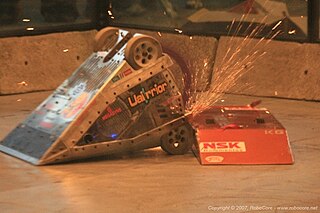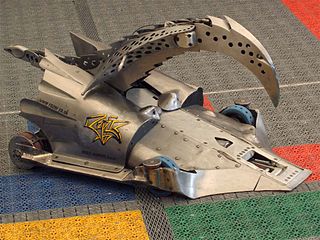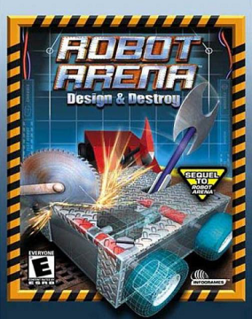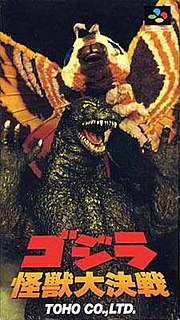
BattleBots is an American robot combat television series. The show was an adaptation of the British show Robot Wars, in which competitors design and operate remote-controlled armed and armored machines designed to fight in an arena combat elimination tournament. For five seasons, BattleBots aired on the American Comedy Central and was hosted by Bil Dwyer, Sean Salisbury, and Tim Green. Comedy Central's first season premiered on August 23, 2000, and its fifth and last season ended on December 21, 2002. The show was in hiatus until it was revived on ABC in 2015.

Robot Wars was a robot combat competition that was broadcast on British television from 1998 to 2004 and from 2016 to 2018. Each series involves teams of amateur and professional roboteers operating their own constructed remote controlled robots to fight against each other in an arena formed of steel and bullet proof glass fitted with arena hazards and containing areas occupied by hostile and heavier "House Robots". Earlier series included assault and trial courses for competing robots.

Sonic Battle is a 2003 fighting video game developed by Sonic Team for the Game Boy Advance. It is the second fighting game in the Sonic the Hedgehog series, the first game being Sonic the Fighters. It is the sequel to 2002's Sonic Advance 2 and was released in Japan in December 2003 and in North America and Europe in early 2004.
Great Mazinger is a Japanese manga comic book and anime television series by manga artist Go Nagai. The story is a sequel and direct continuation of Mazinger Z series after its initial success. The series was aired on Japanese television in 1974, immediately following the end of the first Mazinger series. It ran for 56 episodes.

Hardware is a fictional superhero published by DC Comics. An original character from DC's Milestone Comics imprint, he first appeared in Hardware #1, and was created by Dwayne McDuffie and Denys Cowan.

Robot combat is a mode of robot competition in which custom-built machines fight using various methods to incapacitate each other. The machines have generally been remote-controlled vehicles rather than autonomous robots.

Hypno-Disc was a contestant entry in the Robot Wars TV series, and was one of the first robots permitted to use the kinetic flywheel weapon. Hypno-Disc's design, however, was somewhat basic, and its high ground clearance made it an easy target for robots armed with flipping weapons, such as Chaos 2. Hypno-Disc was the creation of the Rose family — twin brothers Derek and David, and their father Ken. It was the first competitor robot recreated in toy form when the Robot Wars pullback toys were released.
Roadblock was a combat robot that competed on the British television series Robot Wars. Constructed in 1997 by A-level students from Bodmin Community College, the robot was initially called "Road Rage" but was renamed in response to a request from the programme's producers. Both names were derived from the robot's distinctive construction from metal roadsigns. Roadblock was champion of the first series of Robot Wars and finished in third place for the second series. Although Roadblock was armed with a circular saw weapon, its success was primarily due to its wedge-shaped body—Roadblock could drive underneath opponent robots and invert them, rendering many immobile.

Razer is a combat robot that competes on the British television series Robot Wars. It was constructed by Simon Scott and Ian Lewis from Bournemouth; the team later expanded to include webmaster Vincent Blood. Razer was designed and constructed in 1998 to participate in the second series of Robot Wars, but subsequent modifications and improvements enabled it to remain competitive until its retirement after the second series of Robot Wars Extreme. Despite gaining a reputation for being unreliable, it was champion of the fifth series of Robot Wars, runner-up in the sixth, and won the first two Robot Wars World Championships.
Panic Attack was a robot that competed in the British television show Robot Wars. In Series 2, it was just a box, with a set of electrically powered lifting forks, powered by a homemade system. It was emblazoned with the image of a spider. The spider was the result of a school competition to come up with a design of something that made you panic. A 12-year-old girl designed the spider. With her prize money from Series 2, Kim built a newer machine. This one had a srimech, a new body shape, and more effective forks, which were capable of completely overturning opposing machines. The top-mounted self-righting mechanism proved to be unreliable, and was eventually removed. Added in Series 4 were a set of side "skirts" to prevent all but the lowest of robots from getting underneath it, as well as sloping sides. The fourth model had improved skirts, and the srimech was updated to a top flipper, which was the favourite with the driver Kim Davies, who stated it was, in his opinion, the best version.
Tornado was a competitor on the UK TV series Robot Wars, noteworthy as the champion of the sixth series. It was built by Andrew Marchant, Bryan Moss and David Gamble, from Sawtry, near Huntingdon.

Robot Arena 2: Design and Destroy is a robot combat action video game developed by Gabriel Entertainment and published by Infogrames. It is the sequel to Robot Arena, in the Robot Arena videogame series. Compared to its predecessor, it has many new features, such as the Havok physics engine and fully 3-D environments.
Blendo is a combat robot designed and built by Jamie Hyneman. Adam Savage wired the electronics and control systems.
The following is a list of notable contestants that have reached the semi-finals or grand final in Robot Wars.

Godzilla: Kaijū Daikessen is a 2D fighting video game released in 1994 for the Super Famicom. The game was developed by Alfa System and published by Toho. It was the second game based on Toho's Godzilla franchise to be released on Super Famicom, following 1993's Super Godzilla.
Storm 2 is a robot that competed in the British television game show Robot Wars. It was a small invertible box-shaped robot with a wedge on the front. The robot was originally built with no weapons but the team was asked to add an active weapon in order to take part in the seventh series, so the team came up with a built-in lifting arm, very similar to the American robot BioHazard. However, it was not the weapon but the immense speed and power of the robot that did the most damage to its opponents, managing to throw The Steel Avenger out of the Arena in its Series 7 heat final. The robot competed in the seventh series of Robot Wars, winning The Third World Championship at the end of the series, having won the 16th seed into the competition by being victorious in the New Blood Championship of Extreme 2.
In robot combat, a self-righting mechanism or srimech is a device used to re-right a robot should it get flipped. Biohazard of BattleBots was the first robot to self-right.
Robocraft is an online vehicular combat game developed and published by Freejam Games. The game is set on different planets, with players constructing robots to fight with and against others in battle. The game features contained garage bays in which players can build various functional vehicles with basic block-based parts, such as cubes and wheels, along with weapons that can be used for combat. The initial alpha build was released in March 2013, and gained over 300,000 players by the following year. It officially released out of beta on August 24, 2017.
Translational drift also known as melty brain or tornado drive is a form of locomotion, notably found in certain combat robots.








